Willy Martinez's Blog, page 51
January 24, 2022
Sugary Sweet: Poem by Thor S. Carlsson
We would like to introduce you to Thor. Thor submits his content from far away, living in Iceland! Thor S. Carlsson is an Icelandic writer, poet, and musician.
Main photo used by Camila Quintero FrancoHire.
I can see black roses in pill form
Through infrared scanning
Inside the sanctum of two lovers,
The heart you hold is the one you break
The shaded hours where the minutes are dated
Years stripped, bare bones to be cremated
Drown in VHS tapes then hit tracking and rewind
Fissure filled comatose nectar seeps through the mind
Flicker in and out in the wrong crowd, not your kind
You were down with Jonestown
Sugary sweet Kool-Aid permanent showdown
A village of smiles coerced into a frown
If you enjoyed this poetry, we have more at The Ritual Blog.

Thor S. Carlsson is an Icelandic writer, poet and musician. Thor is listed as an Amazon author with a short story collection called, “Somnambulist Sonata,” and with a short story listed in Writers in Lockdown. You can read more of his poetry at at Instagram, here.
The post Sugary Sweet: Poem by Thor S. Carlsson appeared first on Mind on Fire Books.
January 23, 2022
A Ritual To Read To Eachother: Poem by William E. Stafford
William Stafford, “A Ritual to Read to Each Other” from The Way It Is: New and Selected Poems. Copyright © 1998 by William Stafford.
If you don’t know the kind of person I am
and I don’t know the kind of person you are
a pattern that others made may prevail in the world
and following the wrong god home we may miss our star.
For there is many a small betrayal in the mind,
a shrug that lets the fragile sequence break
sending with shouts the horrible errors of childhood
storming out to play through the broken dike.
And as elephants parade holding each elephant’s tail,
but if one wanders the circus won’t find the park,
I call it cruel and maybe the root of all cruelty
to know what occurs but not recognize the fact.
And so I appeal to a voice, to something shadowy,
a remote important region in all who talk:
though we could fool each other, we should consider—
lest the parade of our mutual life get lost in the dark.
For it is important that awake people be awake,
or a breaking line may discourage them back to sleep;
the signals we give — yes or no, or maybe —
should be clear: the darkness around us is deep.
If you are enjoying this guest post, check out some of our other Literary reads, here.
About William StaffordWilliam Stafford was born in Hutchinson, Kansas, on January 17, 1914. He received a BA and an MA from the University of Kansas at Lawrence and, in 1954, a PhD from the University of Iowa. During the Second World War, Stafford was a conscientious objector and worked in the civilian public service camps—an experience he recorded in the prose memoir Down My Heart (1947). He married Dorothy Hope Frantz in 1944; they had four children.
In 1948 Stafford moved to Oregon to teach at Lewis and Clark College. Though he traveled and read his work widely, he taught at Lewis and Clark until his retirement in 1980. His first major collection of poems, Traveling Through the Dark, was published when Stafford was forty-eight. It won the National Book Award in 1963. He went on to publish more than sixty-five volumes of poetry and prose. Among his many honors and awards were a Shelley Memorial Award, a Guggenheim Fellowship, a National Endowment for the Arts fellowship, and a Western States Lifetime Achievement Award in Poetry. In 1970, he was the Consultant in Poetry to the Library of Congress (a position currently known as the Poet Laureate).
William Stafford, “A Ritual to Read to Each Other” from The Way It Is: New and Selected Poems. Copyright © 1998 by William Stafford. Reprinted by permission of Graywolf Press.Source: Indivisible: Poems for Social Justice (Norwood House Press, 2013)
The post A Ritual To Read To Eachother: Poem by William E. Stafford appeared first on Mind on Fire Books.
January 20, 2022
Mac Miller and Rumi Make a Ritual To Read to Each Other, by Megan Willome
Whilst perusing the interwebs, we came across this wonderfully creative intersection of culture, perspective and philosophy.
Megan Willome, author of The Joy of Poetry: How to Keep, Save & Make Your Life With Poems, shares with us her thoughts on Rumi and Mac Miller. Wait, but why those two?
A Ritual to Read to Each Other: Rumi and Mac Miller“And so I appeal to a voice, to something shadowy,
a remote important region in all who talk”
“A Ritual to Read to Each Other” by William Stafford
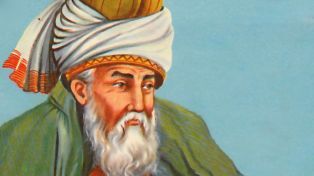 Mac Miller and Rumi Similarities
Mac Miller and Rumi SimilaritiesSometimes in this crazy world that’s getting a little more nutty every day, we need a voice that’s “shadowy” to speak truth. Someone who can “talk” from beyond the grave, that “remote important region.” Sometimes we need a poet in a turban. Sometimes we need a poet covered in tattoos. We need a little Rumi and Mac Miller now.
I’ve been reading Rumi this month, and he is not exactly my cup of tea. But this 13th century Sufi mystic remains one of the most popular poets in the world, and so when I got a deal on The Essential Rumi, I decided to dive in. Then I read a Tweetspeak post about a student who combined the lyrics of rapper Lauryn Hill with lines from poet Emily Dickinson, and I stood up inside myself and said, RUMI AND MAC ARE SOUL BROTHERS!
Like Rumi, Mac Miller has never been my cup of tea either, but after his death from an accidental overdose, his family postumously released his album Circles, and I finally understood his popularity.
If you are enjoying this guest post, check out some of our other Literary reads, here.
The more I think about the similarities between these two artists, the more excited I get. I like the idea of Mac as a mystic, or alternatively, Rumi as a rapper.
Megan Willome
 Mac Miller and Rumi Similarities
Mac Miller and Rumi SimilaritiesHere’s a sentence about Rumi that works for Mac as well: “Rumi’s fame during his own lifetime was notable, and his death was widely mourned.” If Rumi had a YouTube channel I suspect the comments would be just as laudatory as those on Mac’s, with sentiments like “see you in the next life brother” and “Stress no more. Rest easy,” and “I hope he knows how many people he helped, especially after death.”
So let’s do this. Let’s place lines from Rumi’s My Worst Habit beside Mac’s Good News. Let’s make some weird, wild poetry. I chose these two works in particular because both have a sense of hopeful despair.
My Worst Habit: Good NewsR: My worst habit is I get so tired of winter
M: Well so tired of being so tired
R: I become a torture to those I’m with
M: No they don’t like me when I’m down

R: My words / tangle and knot up
M: What is there to say?
R: If you’re not here, nothing grows.
M: I’m running out of gas, hardly anything left / Hope I make it home from work
If you are enjoying this guest post, check out some of our other Literary reads, here.
R: How to cure bad water? Send it back to the river.
M: When you’re high but you’re underneath the ceiling
 Mac Miller and Rumi Similarities
Mac Miller and Rumi SimilaritiesR: When water gets caught in habitual whirlpools
M: Why I gotta build something beautiful just to go set it on fire?
R: Dig a way out through the bottom / to the ocean
M: Wake up to the moon, haven’t seen the sun in a while / But I heard that the sky’s still blue
R: Take sips of breath all day and night / before death closes your mouth.
M: I’m always wonderin’ if it feel like summer / I know maybe I’m too late

This wonderful Alice in Wonderland Interactive edition includes a whopping 101 quotations from the Alice In Wonderland saga! Each of these 101 Alice Quotes are linked to the stories. This means that you can easily and quickly find the quote in its original context.
Only $9.99 for a limited time!
R: Look as long as you can at the friend you love,
M: There’s a whole lot more for me waitin’ on the other side
M: It ain’t that bad / ain’t so bad / well it ain’t that bad / at least it don’t gotta be no more
R: There is a secret medicine / give only to those who hurt so hard / they can’t hope
R: The hopers would feel slighted if they knew.
M: It make ‘em so uncomfortable
In the section The Essential Rumi, translator Coleman Brooks tells an old Chinese Taoist story that ends with this observation: “Rumi’s poems are like firecrackers on a funeral pyre. They won’t allow much public posturing, and they point us away from misery.” Sometimes the only way to make sense of this life’s remote important regions is to light a fire, stand back, and let the teaching begin.
Your turn1. Can you think of a poet and a singer/songwriter whose words might pair well?
2. I got into both Rumi and Mac at the nudging of others. Who is an artist you initially did not care for, but later found something to like after being encouraged to dive in?
3. Share your July pages. Sliced, started, and abandoned are all fair game.
Elevate my Thoughts
We promise not to spam you or share your information with unwanted users. You may unsubscribe at any time.
Processing… Success! You're on the list. Whoops! There was an error and we couldn't process your subscription. Please reload the page and try again. About the Author Megan Wilome Guest Post A Ritual to Read to Eachother
Megan Wilome Guest Post A Ritual to Read to EachotherMegan Willome is a contributing writer for Rock & Vine and the Art Guide, both published by the Fredericksburg Standard. She also writes poetry prompts for Chronic Joy and has done some work for Magnolia Journal. At Tweetspeak Poetry, where serves as editor, she writes book reviews for grownups and kids and lead a monthly column encouraging all of us to learn poetry By Heart (in other words, memorize ’em!).
In 2016 TS Poetry Press published The Joy of Poetry, a story of losing my mom and finding poetry. It’s part memoir, part anthology (my own poems and those of others), and part spirited defense of poetry, especially for those who think they hate it.
Megan Willome
The post Mac Miller and Rumi Make a Ritual To Read to Each Other, by Megan Willome appeared first on Mind on Fire Books.
January 19, 2022
The Best, 24th Century Dick by Daniel Smallegange: Book Review
The 24th Century Dick by Daniel Smallegange scores a 5 out of 5 coffees mugs. Who would think that a sci-fi reality, disguised with a classic noir cast, would be as entertaining as this one is?
“Of all the planets in the Galaxy, she had to crash into mine”
Molloy, in 24th Century Dick
I have not read a book this fun in a long time! Probably not since I read some Mark Twain in a graduate course. Daniel Smallegange produces a high-paced action sci-fi book, with a hilariously, cool noir twist.
Not only is 24th Century Dick a real page-turner with action scenes, Daniel really has taken the noir genre and pulled out some real genuine character tropes from that era. Despite the events taking place within inter-planetary constructs, the feelings and emotions play out in this book like familiar relationships.
 The 24th Century Dick by Daniel Smallegange: Book Review
The 24th Century Dick by Daniel Smallegange: Book ReviewI can also tell that Daniel Smallegange really took his time with the layout and production of the book itself. I mention this because oftentimes, as indie writers, we don’t always produce the best physical product because we focus more on the content. The book cover is a perfect match for the book, as well as incorporating creative little logos which are better understood after reading the book, yet, equally enthralling at first view, making you wonder what the little creative logos are really all about.
If you are into Dark and Visceral fiction, check out our “Mad Men” anthology here.From the initial crash scene where Lucy crash lands a stolen spaceship at the doorsteps of a private detective, Molloy, the reader is immersed in this crazy world where it appears that not many people can be trusted, aliens like to drink and do drugs – often, and a place where murder just seems like something you survive on a daily walk to the park.
The main character, Molloy has a loving and smarter-than-him, assistant Manuel. With the help of Manuel, Molloy embarks on an all-expenses-paid investigation into a stolen artifact and mysterious person. Along the journey, we meet my favorite character of all, Amoz. He is a big dumb-dumb, but he’s really the kind of guy we all want or should have in our lives. He is dependable and saves Molloy various times. I have to admit, I grew a serious attachment to this big loving guy that Molloy brings to every fight.
The best part of having a cast of intergalactic noir stars drink like they are pregaming for a college rager is the fact that they can cure the hangover with a small pill the following morning. Thus, giving the characters freedom to do it all over again for our amusement. The slapstick humor is just spot-on and witty as sci-fi can get.
I really, really, enjoyed this book thoroughly and read it quickly (which I rarely do) because it was so humorous and fast-paced. And I highly recommend purchasing 24th Century Dick by Daniel Smallegange or at least put it on your TBR (TO-Be-Read) list.
If you liked this review, check out our Movie and Book Review section, here.
Book Synopsis Transcribed from 24th Century Dick“Of all the planets in the galaxy, she had to crash into mine. In a fiery burst of splendour and mayhem she camen, destroying all before her in a cacophonous rush of smoke and fire and burning debris of which, I would bet, the insurance won’t even begin to cover. Also, the dry cleaning bill will be murder on my favourite pair of slacks…”
Thus begins the epic science-fiction comedy: 24th Century Dick, about a down on his luck private detective named Molloy who just can’t seem to get a break. That is until the beautiful and enigmatic Lucy Morrow-Schleswinginger crashes a stolen spaceship practically at Molloy’s door. She has a case and is hot for more reasons than the fact her dress is still smoldering.
Remember that when you shop at small businesses, you help your community, the environment, and the economy. Shop indie books at Indie Bound.
 The 24th Century Dick by Daniel Smallegange: Book Review
The 24th Century Dick by Daniel Smallegange: Book ReviewThe case; to find the mysterious and possibly cursed Famous Jewelled PHallus of Arkon III the Credulous, a mythical and priceless artifact she dubiously claims was stolen from her. All Molloy cares about is his empty wallet, however, and the four hundred credits a day plus expenses she is willing to pay. He takes the case and along with his trusty assistant Manuel, embarks on a crazy hunt across inter-stellar space.
Adventures with over-sensitive elevators, pacifist hired goons, purple ladies of the night, Frankenstein-esque publicans, revolutionary robot bartenders, the Benevolent Fascist Society, a ship named Ship, bounty hunters, and more bumbling space cops than you can shake a wet blaster at will have readers chuckling throughout this hilarious noir detective sci-fi adventure.
If you liked this review, check out our Movie and Book Review section, here.Elevate my Thoughts
We promise not to spam you or share your information with unwanted users. You may unsubscribe at any time.
Processing… Success! You're on the list. Whoops! There was an error and we couldn't process your subscription. Please reload the page and try again.The post The Best, 24th Century Dick by Daniel Smallegange: Book Review appeared first on Mind on Fire Books.
January 18, 2022
Mind on Fire Books
 Mind on Fire Books
Mind on Fire Books 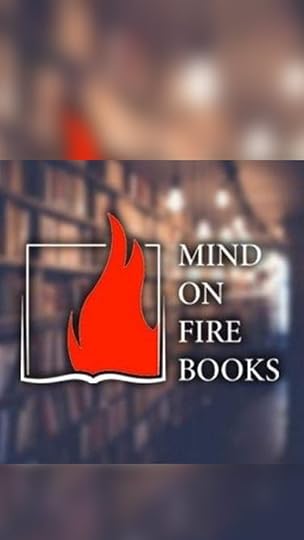
The post Mind on Fire Books appeared first on Mind on Fire Books.
January 17, 2022
The Best Martin Luther King Jr. Quotes From Goodreads
Who better to ask for their favorite quotes from Dr. Martin Luther King Jr., than from actual people who love to read books? The following list of 10 quotes below are the top rated and most discussed on a Goodreads thread.
Top 10 Martin Luther King Jr. Quotes“I have decided to stick to love…Hate is too great a burden to bear.”
― Martin Luther King Jr., A Testament of Hope: The Essential Writings and Speeches
“Darkness cannot drive out darkness: only light can do that. Hate cannot drive out hate: only love can do that.”
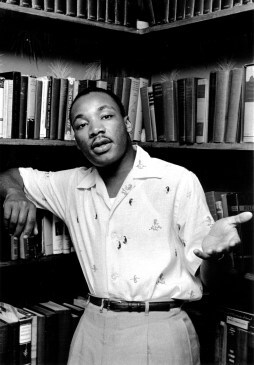 The Best Martin Luther King Jr. Quotes From Goodreads
The Best Martin Luther King Jr. Quotes From Goodreads“The function of education is to teach one to think intensively and to think critically. Intelligence plus character – that is the goal of true education.”
“Our lives begin to end the day we become silent about things that matter.” ― Dr. King, I Have a Dream: Writings and Speeches That Changed the World
“In the end, we will remember not the words of our enemies, but the silence of our friends.”
“Faith is taking the first step even when you can’t see the whole staircase.”
“If you can’t fly then run, if you can’t run then walk, if you can’t walk then crawl, but whatever you do you have to keep moving forward.”
If you are enjoying this article, check out our Literary content at The Ritual Blog.“But I know, somehow, that only when it is dark enough can you see the stars.”
“Let no man pull you so low as to hate him.” ― Martin Luther King Jr., A Knock at Midnight: Inspiration from the Great Sermons of Reverend Martin Luther King, Jr.
“There comes a time when one must take a position that is neither safe, nor politic, nor popular, but he must take it because conscience tells him it is right.”― Dr. King, A Testament of Hope: The Essential Writings and Speeches
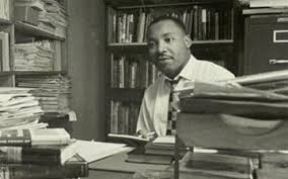 The Best Martin Luther King Jr. Quotes From Goodreads
The Best Martin Luther King Jr. Quotes From GoodreadsDid you know that Dr. King was influenced by many books. One book that thoroughly inspired him was ‘Civil Disobedience‘ by Henry David Thoreau.
Elevate my Thoughts
We promise not to spam you or share your information with unwanted users. You may unsubscribe at anytime.
Processing… Success! You're on the list. Whoops! There was an error and we couldn't process your subscription. Please reload the page and try again.The post The Best Martin Luther King Jr. Quotes From Goodreads appeared first on Mind on Fire Books.
January 11, 2022
5 Things C E Hoffman’s Cat Taught Them About Life
The following philosophical-satire (if that’s a thing) was submitted by C E Hoffman, author of Sluts and Whores. But it has to be a thing, especially since writers love satire – I mean cats. Sluts and Whores is a short story collection in which each story questions stereotypes that are long out of date, merging horror with heartache and magic with the mundane.
Life Hacks Learned From a Cat1. Kiss your loved ones.Kiss them like their life depends on it.
Kiss them like your life depends on it.
Kiss them like kisses make them clean.
2. Boundaries matter.Tell people when you need space. (Don’t overcorrect.)
It’s okay to stay or go. (You can always come back!)
3. Attain a balance of play and rest.Any time or place can constitute naps or games.
You don’t need fancy shit to have fun.
4. People (and cats) can change.(If given the opportunity.)
Be patient. Forgive. Hold space.
If are you enjoying this light-hearted article, check out some of our other Literary content at The Ritual blog here.
5. Our time is limited. C E Hoffman, author of sluts and whores lerans from her cat
C E Hoffman, author of sluts and whores lerans from her catCats may have nine lives, but none of those lives are long enough.
The only thing that lasts is love.
So love- hard, and often. Love enough in one moment to last a lifetime.
Love enough in one lifetime to last an eternity.
Martin Millar, author of Lonely Werewolf Girl, The Good Fairies of New York, and others
The human spirit remains fresh-voiced, optimistic and youthful in Hoffman’s imaginative writing.
More about Sluts and Whores:
Sluts and Whores, written by C E Hoffman is available for purchase at Amazon.
 C E Hoffman author of sluts and whores learns from cat
C E Hoffman author of sluts and whores learns from catA jealous girlfriend trips on acid. A traumatized mother attempts to masturbate; a spa worker is challenged to take control of her fate. A haunted jeep parks in front of student housing. A sex worker grows wings; a hitchhiker is picked up by someone she never expected. Welcome to the Big City, where anything can happen…and very often does. In this debut collection from C E Hoffman, explore the humanity of sex workers (“whores”) and people who are proudly sexual (“sluts”). Each story questions stereotypes that are long out of date, merging horror with heartache, and magic with the mundane.
If are you enjoying this light-hearted article, check out some of our other Literary content at The Ritual blog here.
What People Are Saying About C E HoffmanC E Hoffman is a fearless writer.
Jack Wang, author of We Two Alone and winner of the 2021 Danuta Gleed Literary Award
Neil S. Reddy, author of Cause for Concern
Jane Austen would read it in bed.
Justin Bookworm, Razorcake Issue #123
Hoffman’s writing style reminds one of Burroughs at his most straightforward or Irvine Welsh at his strangest, but with a presentation dominated primarily by women and queer characters- a refreshing change in this particular milieu.…Hoffman is definitely a writer to watch for, and I look forward to what they give us next.
Elevate my Thoughts
We promise not to spam you or share your information with unwanted users. You may unsubscribe at any time.
Processing… Success! You're on the list. Whoops! There was an error and we couldn't process your subscription. Please reload the page and try again.The post 5 Things C E Hoffman’s Cat Taught Them About Life appeared first on Mind on Fire Books.
January 7, 2022
Haiku For the Wanderluster
We have more Poetry at The Ritual. A haiku poem written by Willy Martinez.
All rights reserved by Mind on Fire Books.
The post Haiku For the Wanderluster appeared first on Mind on Fire Books.
January 6, 2022
Lysias the Greek Orator With The Most Writing Published
Lysias the Greek Orator was said to have been a “man of warm nature, impulsive, hospitable, attached to his friends… carrying into social life the same intellectual quality which marks his best work – the grace and at the temperate brightness of a thoroughly Athenian mind” (Jebb 157).
Scholars debate the birth of Lysias the Greek Orator (Dionysius and Plutarch), placing it to be between 459 and the 440’s BCE. He lived to be approximately 79 years of age. The large number in discrepancy is due to the fact that his mother has been proven to still be alive as late as 380 BCE.
However, he was not a citizen of Athens (Jebb 142). At the age of fifteen, he travels to Southern Italy where he was said to have begun to study under Tisias, but either dropped out, or was expelled (Edwards 20). Jebb notes that he may have been kicked off of the Sicilian island with three hundred others who were accused of “atticising” (146).
He returned home to work in the family business of shield making with his brothers, only to be robbed of his land by the Thirty in 1404. The tyrants targeted his family because they were members of the privileged class of resident aliens who didn’t have to pay special taxes.
Lysias the Greek Orator Escapes DeathAs a young boy, he grew up in Athens, in the house where Plato sets his Republic and “in the society of the most distinguished Athenians” (Jebb 146).
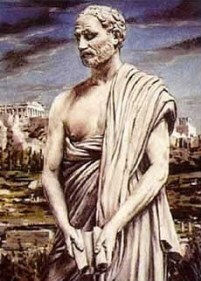 Lysias the greek orator
Lysias the greek oratorJebb transcribes a scene in which Lysias was said to have offered the tyrants a large sum of money in exchange for a chance to escape. The tyrants tricked him into the bribe, but still managed to murder his brother. Lysias though, managed to escape.
After the coup of the tyrants, Lysias returns to prosecute Eratosthenes, one of the members of the thirty who was actually believed to be the one to arrest and kill his brother. This case was personal for Lysias; it avenged his former property loss and the death of his brother (Edwards 21).
If you liked this article, we have similar content studying communication from discourse theory, here.This is the only case is the only forensic speech known to have been spoken by Lysias himself. His activity as a logographer falls “as best as we know” between the years 403 and 380 BCE. After a few years of having gained experience in working as a logographer, he offered his help to Socrates, an old friend of the family.
Even though Lysias the Greek Orator wasn’t an official citizen of Athens, his style was still considered Atticistic. His not being a citizen is also what kept him from being able to pursue a law career. His loss of the family business is what led him to become a logographer.
He has written the most speeches of the Alexandrian ten and also the most varied in context. As a human, he is said to have been a:
“man of warm nature, impulsive, hospitable, attached to his friends… carrying into social life the same intellectual quality which marks his best work – the grace and at the temperate brightness of a thoroughly Athenian mind” (Jebb 157).
Classical historians have estimated his death to be around 380 BCE, and argue over whether he died at 66 or age of 79 (Edwards).
Elevate my Thoughts
We promise not to spam you or share your information with unwanted users. You may unsubscribe at anytime.
Processing… Success! You're on the list. Whoops! There was an error and we couldn't process your subscription. Please reload the page and try again. The Plain Style of Lysias the Greek Orator:Athenian citizens regarded his models to be of “pure and lucid Attic prose”, meaning that he used plain language; not much poetics or metaphors are deployed (Edwards 20). Lysias differs from the four fold structure, in that he adds an explanatory introduction, usually to the narrative.
His styles and commonplaces are tailored to the individual case or subject. (Edwards). Above all merits, his greatest style was narration.
“Presentation of character” is what has been argued to be the reason for his success in narration (Porter 64).
And it is this “gullible cuckold” character that drives the popularity of Lysias’ first and most famous speech, “On the Killing of Eratosthenes” (Edwards 22).
Look inside Details On Writing Horror Willy MartinezOn Writing Horror amassed from an obsession to learn where the power of fear resides. An anthology of works studying the way in which writers evoke fear and how they may affect us. On Writing Fear is an index of terror, drawing from Aristotle, Longinus, Edmund Burke, Che Guevarra, Wordsworth, Foucault, H.P. Lovecraft, Todorov, and many more.
Chapters include digital illustrations created by the author.
Also available at the Apple iBookstore, Kobo, Barnes and Noble, and Smashwords.
A must have collection of research on the power of Horror- a tormented treatment of the human passions!
Tweet
Table of Contents for On Writing Horror
Ch 1. Fear and War: Crafting the War on Terror Using Fear Appeals Ch 2. The Art of the Coup D'etat Ch 3. The Feminine Supernatural versus the Male Supernatural Writers Ch 4. Projecting Ghost Children to Find Identity Ch 5. The Supernatural Power of the Sublime in Wordsworth's Poetry Ch 6. Disorienting Characters with Haunted Spaces and Auditory Hallucinations Ch 7. Modern Ghosts Ch 8. The Fantastic in Fear Ch 9. The Fun Side of Fear: Faustus' Tricky Imp of Satan Ch 10. Glorifying Satan
Some of the art included:
[caption id="attachment_4846" align="alignnone" width="188"]
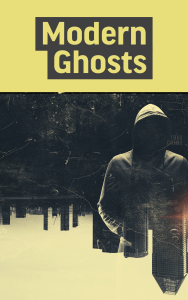 Art for On Writing Horror[/caption]
Art for On Writing Horror[/caption][caption id="attachment_4847" align="alignnone" width="200"]
 Art for On Writing Horror[/caption]
Art for On Writing Horror[/caption][caption id="attachment_4848" align="alignnone" width="194"]
 Art for On Writing Horror[/caption]
Art for On Writing Horror[/caption].book[data-book="book-4786"] .cover::before {background: url(https://mindonfirebooks.com/wp-conten... figure .buttons a { font-size:0.65em !important;}.bookshelf figure h2 { font-size:1.8em !important;}div#bookshelf { -ms-transform: scale(1, 1); /* IE 9 */ -webkit-transform: scale(1, 1); /* Safari */ transform: scale(1, 1);} Look inside Details Mad Men Mad Men is a collection of three disturbing horror shorts from authors living in the Midwest. The themes explored in this collection range from man versus self, man versus man, and man versus creature.
[caption id="attachment_4742" align="alignleft" width="188"]
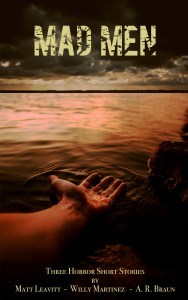 Mad Men eBook at Mind on Fire Books[/caption]
Mad Men eBook at Mind on Fire Books[/caption]Mad Men begins with Matt’s tale, a thought-provoking thriller which causes the reader to question his reality and what he fears within himself. The second tale explores the grotesque juxtaposed with beautiful nature, where the ending unfolds into a horrific dream, waking in even more terrible pain. The third tale is by seasoned horror writer, A.R. Braun – and his diabolical creatures never disappoint! A.R. Braun’s goal is to be on the banned book list; we think this tale may just be evil enough to be considered. A must read before it does get banned!
Mainstream Horror Shorts don’t always satisfy us in the way they should. They don’t open conversations about what it is that we fear or why we fear such things, they focus mainly on pop culture and gore. The writers in the Mad Men anthology understand the need for literate horror, opening discussions of man’s psyche. When these writers set out to tell a story, they are less interested in conveying fear and more interested in wonder, the sublime, and the infinite strangeness that drives all man and woman. Highly recommended for tweens, teens, and adults.
The Mad Men anthology published by Mind on Fire Books. Written by Willy Martinez, A.R. Braun and Matt Lavitt. No part of this book shall be copied without permission from the publisher. .book[data-book="book-4740"] .cover::before {background: url(https://mindonfirebooks.com/wp-conten... figure .buttons a { font-size:0.65em !important;}.bookshelf figure h2 { font-size:1.8em !important;}div#bookshelf { -ms-transform: scale(1, 1); /* IE 9 */ -webkit-transform: scale(1, 1); /* Safari */ transform: scale(1, 1);}
John R. Porter argues alongside of the ancient Greek Historian, Dionysius, who reports of Lysias the Greek orator being the best of all narrative orators in his article “Adultery by the Book: Lysias 1 (On the murder of Eratosthenes) and Comic Diegesis”.
Porter claims that even though Lysias work sparks interest due to issues of Athenian bourgeoisie, social history and the status of women, that the real credit lay in his “virtues” of persuasive narrative which
“conveys an engaging and believable impression of the speaker himself” (61).
Jebb opens up his description on the Lysias style by saying that “he was a literary artist”, we just have to understand the context under which he was writing. Some of his speeches may seem weak if they are just studied for rhetorical tools of persuasion, we must understand who he was writing for. Lysias is best known for adapting language to fit his customer.
If you liked this article on Lysias the Greek Orator, we have similar content studying communication from discourse theory, here.He didn’t just produce templates for clients, he took the time to make sure the facts were correct, the diction fit the litigant, and that the situation would unfold in plain terms: “Lysias was a discoverer when he perceived hat a purveyor of words for others and gave the words the air of being their own” (159).
 Lysias the greek orator on the Murder of Eratosthenes
Lysias the greek orator on the Murder of EratosthenesIn describing Lysias style as studied under the lens of Cicero’s descriptions of style, Lysias would fit the “plain style”, which was best suited for the law courts. It was Lysias who perfected this, in fact, he is said to be the “canon” of that style by both Dionysius and Cicero (162). To extend his merits of the plain canon, Lysias perfected this style when it wasn’t expected.
Writing for the courts was limited to the artistic or the high class, so writing speeches in plain attistic language would have been daring, bold and new. Lysias was able to write many plain-styled speeches, yet vary their language to fit the litigant’s educational background (164). Lysias himself even considered himself to have developed a plain style after beginning with a style which he thought to be artificial.
Dionysius pronounces “Lysias style to be perfectly pure in expression, the best canon of Attic speech, – not of the old used by Plato and Thucydides, but of that which was in vogue in his own time” (168). Plato describes him as “the best of our writers” (Phaedrus 228a).
If you liked this article, we have similar content studying communication from discourse theory, here.Usher argues in “Lysias and his Clients” that Plato “acknowledges the breadth of Lysias’ literary field by mentioning his activities as a forensic and political speechwriter, which had been the object of a jibe by a contemporary” (29).
Plutarch records that Lysias is said to have lost in only two of his published speeches and that he also wrote other treatises or exercises (Plutarch, Demosthenes 25).
Works:Dionysius pronounced 233 of 425 speeches attributed to Lysisas to be genuine; 35 have survived in whole or in part (Edwards 21). The Eroticus is included in Plato’s Phaedrus. The majority of his works are forensic.
On the Killing of Eratosthenes (forensic); Funeral Speech 392 BCE (Epideictic); Against Andocides 400 BCE (Forensic); On the Constitution 403 BCE (Deliberative); For Polystratus 410BCE (Forensic)
Look inside Details On Writing Horror Willy MartinezOn Writing Horror amassed from an obsession to learn where the power of fear resides. An anthology of works studying the way in which writers evoke fear and how they may affect us. On Writing Fear is an index of terror, drawing from Aristotle, Longinus, Edmund Burke, Che Guevarra, Wordsworth, Foucault, H.P. Lovecraft, Todorov, and many more.
Chapters include digital illustrations created by the author.
Also available at the Apple iBookstore, Kobo, Barnes and Noble, and Smashwords.
A must have collection of research on the power of Horror- a tormented treatment of the human passions!
Tweet
Table of Contents for On Writing Horror
Ch 1. Fear and War: Crafting the War on Terror Using Fear Appeals Ch 2. The Art of the Coup D'etat Ch 3. The Feminine Supernatural versus the Male Supernatural Writers Ch 4. Projecting Ghost Children to Find Identity Ch 5. The Supernatural Power of the Sublime in Wordsworth's Poetry Ch 6. Disorienting Characters with Haunted Spaces and Auditory Hallucinations Ch 7. Modern Ghosts Ch 8. The Fantastic in Fear Ch 9. The Fun Side of Fear: Faustus' Tricky Imp of Satan Ch 10. Glorifying Satan
Some of the art included:
[caption id="attachment_4846" align="alignnone" width="188"]
 Art for On Writing Horror[/caption]
Art for On Writing Horror[/caption][caption id="attachment_4847" align="alignnone" width="200"]
 Art for On Writing Horror[/caption]
Art for On Writing Horror[/caption][caption id="attachment_4848" align="alignnone" width="194"]
 Art for On Writing Horror[/caption]
Art for On Writing Horror[/caption].book[data-book="book-4786"] .cover::before {background: url(https://mindonfirebooks.com/wp-conten... figure .buttons a { font-size:0.65em !important;}.bookshelf figure h2 { font-size:1.8em !important;}div#bookshelf { -ms-transform: scale(1, 1); /* IE 9 */ -webkit-transform: scale(1, 1); /* Safari */ transform: scale(1, 1);} Look inside Details Mad Men Mad Men is a collection of three disturbing horror shorts from authors living in the Midwest. The themes explored in this collection range from man versus self, man versus man, and man versus creature.
[caption id="attachment_4742" align="alignleft" width="188"]
 Mad Men eBook at Mind on Fire Books[/caption]
Mad Men eBook at Mind on Fire Books[/caption]Mad Men begins with Matt’s tale, a thought-provoking thriller which causes the reader to question his reality and what he fears within himself. The second tale explores the grotesque juxtaposed with beautiful nature, where the ending unfolds into a horrific dream, waking in even more terrible pain. The third tale is by seasoned horror writer, A.R. Braun – and his diabolical creatures never disappoint! A.R. Braun’s goal is to be on the banned book list; we think this tale may just be evil enough to be considered. A must read before it does get banned!
Mainstream Horror Shorts don’t always satisfy us in the way they should. They don’t open conversations about what it is that we fear or why we fear such things, they focus mainly on pop culture and gore. The writers in the Mad Men anthology understand the need for literate horror, opening discussions of man’s psyche. When these writers set out to tell a story, they are less interested in conveying fear and more interested in wonder, the sublime, and the infinite strangeness that drives all man and woman. Highly recommended for tweens, teens, and adults.
The Mad Men anthology published by Mind on Fire Books. Written by Willy Martinez, A.R. Braun and Matt Lavitt. No part of this book shall be copied without permission from the publisher. .book[data-book="book-4740"] .cover::before {background: url(https://mindonfirebooks.com/wp-conten... figure .buttons a { font-size:0.65em !important;}.bookshelf figure h2 { font-size:1.8em !important;}div#bookshelf { -ms-transform: scale(1, 1); /* IE 9 */ -webkit-transform: scale(1, 1); /* Safari */ transform: scale(1, 1);}
The post Lysias the Greek Orator With The Most Writing Published appeared first on Mind on Fire Books.
January 5, 2022
The Calling: A Poem Reflecting on the Winter Cold
“The Calling” is a poem written by Willy Martinez. He was perusing the internets when he came across this image and decided to dabble a few lines in response to it. We do apologize for not knowing who the photographer is, as lovely as this photo is, it deserves its credit.
Awoken to transitional decay, The call of the wild directs me To this place I'll stay. Like a memory within a dream Of a foreshadowed scene Vivid to the senses as near-death Experiences played on repeat, It draws me, as a tomb does its corpse. Live to return to the sourceWe have more Poetry at The Ritual. All rights reserved by Mind on Fire Books.
The post The Calling: A Poem Reflecting on the Winter Cold appeared first on Mind on Fire Books.



